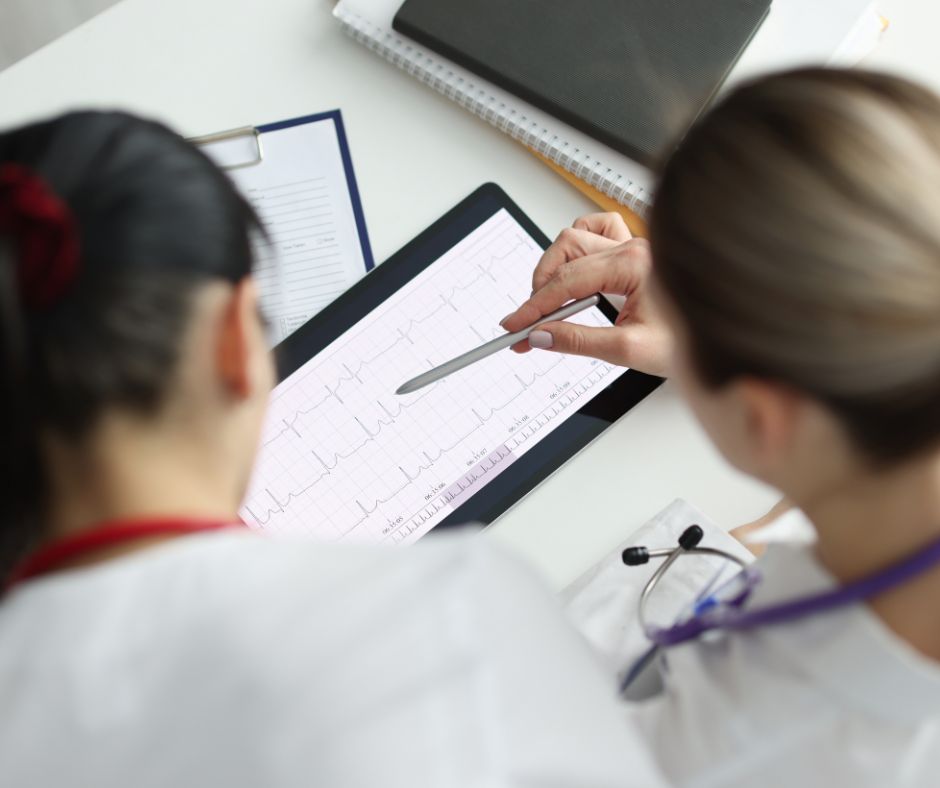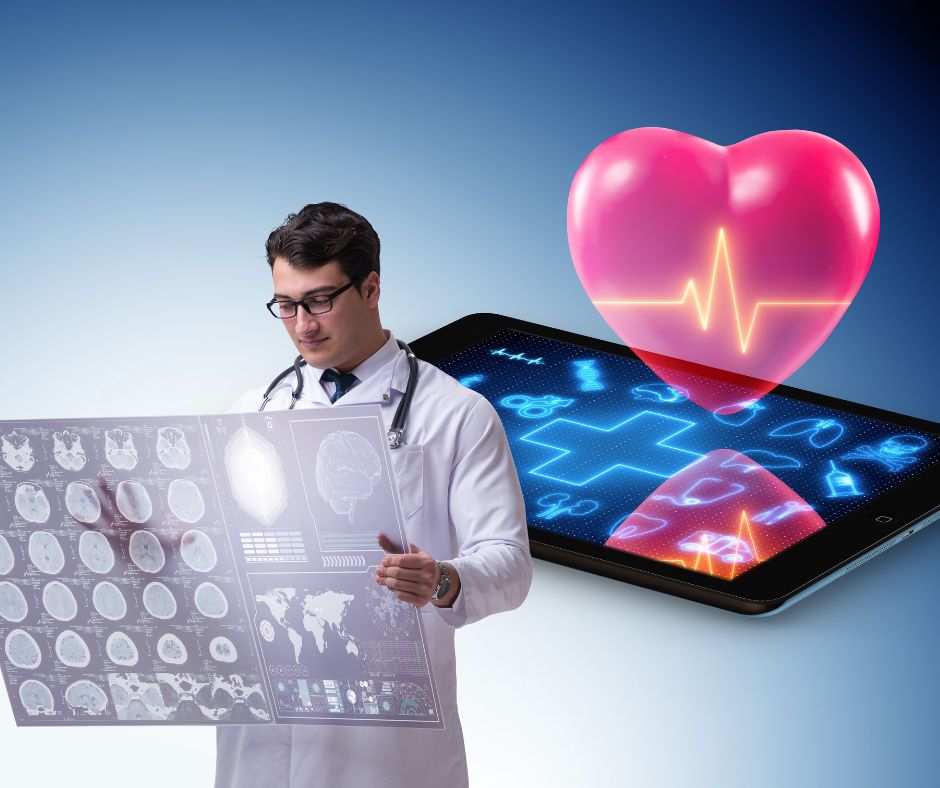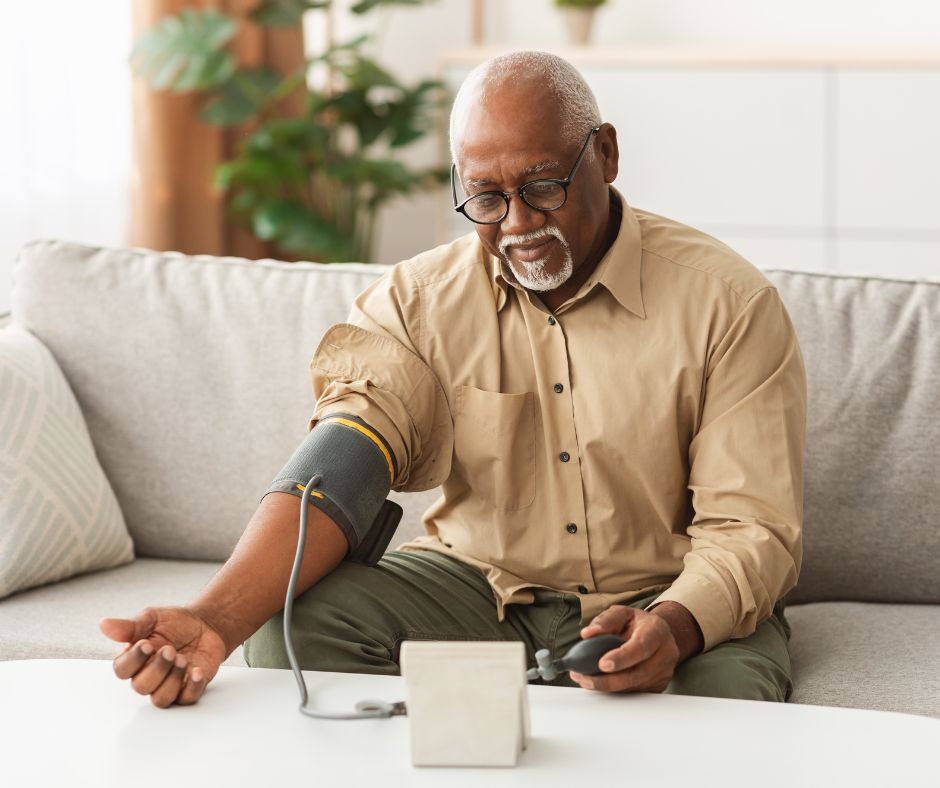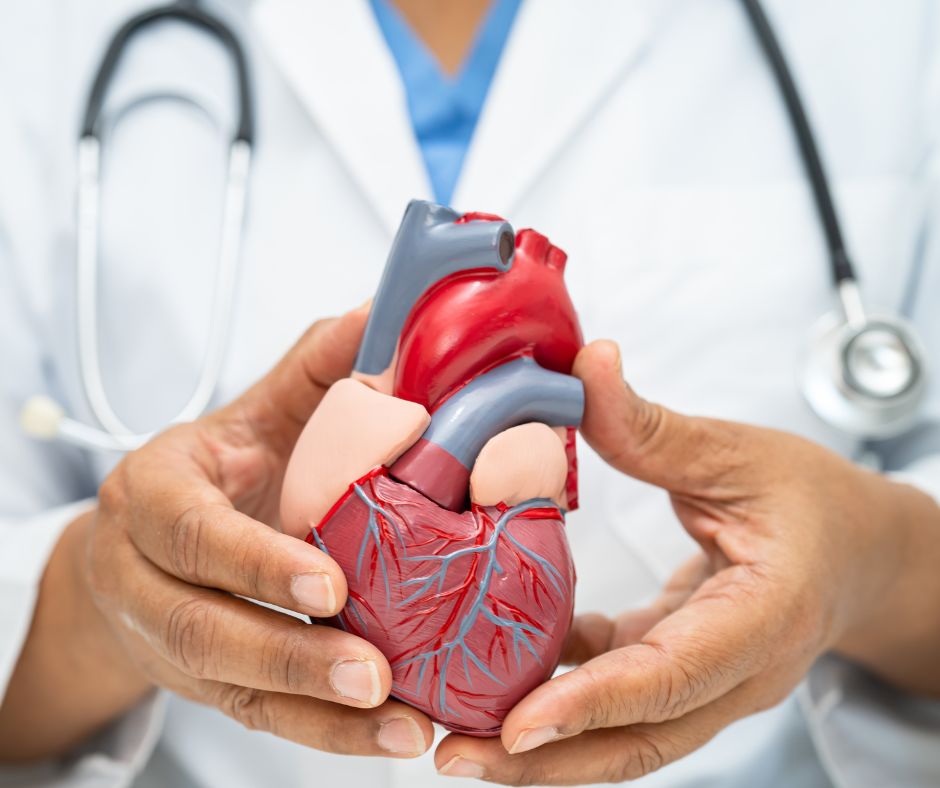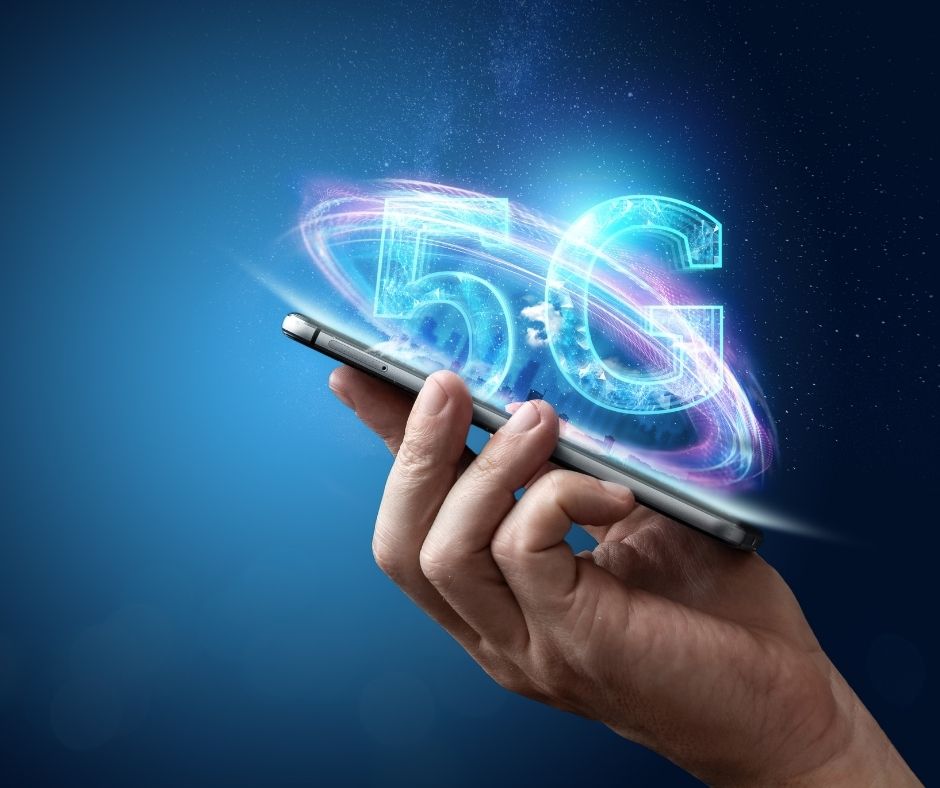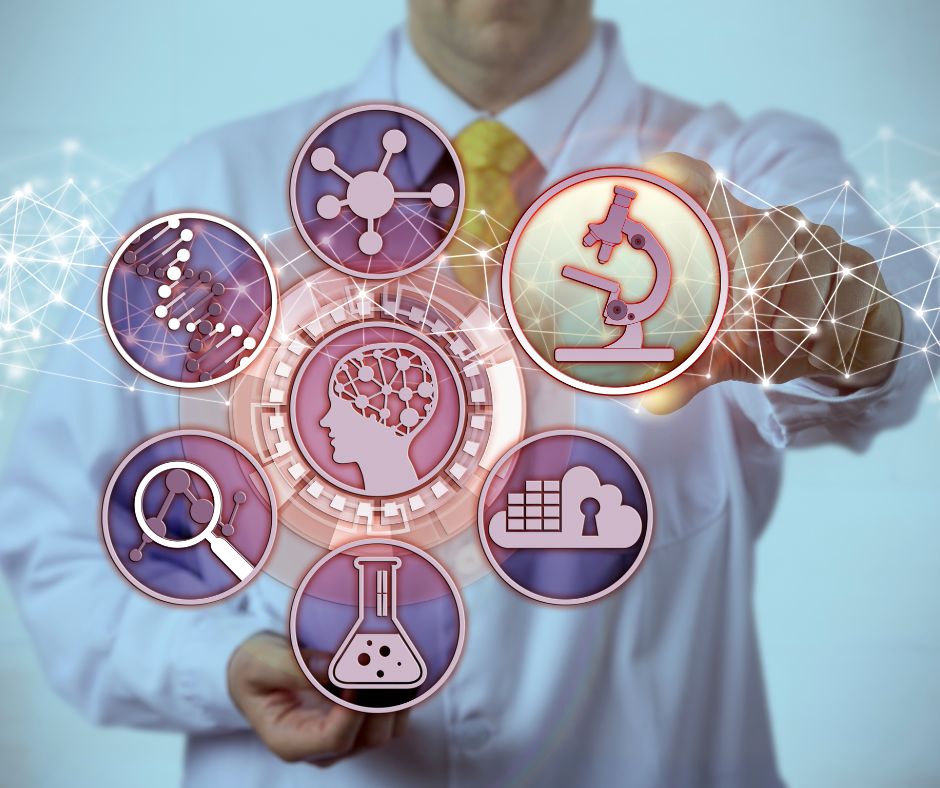With 76% of U.S. hospitals using telehealth services, AI plays a big role in improving diagnostic accuracy and patient care. In fact, the U.S. telehealth market is expected to reach a value of $590.6 billion by 2032. AI in telehealth diagnosis is a major factor in this surge.

Let’s explore how AI is enhancing medical diagnosis in telehealth, and its applications.
Contents
Applications of AI in Telehealth Diagnosis
AI in healthcare
AI refers to algorithms (computer systems) that can perform tasks that typically require human intelligence. In healthcare, AI encompasses a wide range of technologies designed to assist medical professionals in various aspects of patient care (Davenport & Kalakota, 2019). These applications include:
- Analyzing medical images
- Predicting disease risks
- Recommending treatment plans
- Automating administrative tasks
AI’s ability to process vast amounts of data quickly and identify patterns makes it an invaluable tool in the medical field, where precision and speed can make a significant difference in patient outcomes.
How AI integrates with telehealth platforms
Telehealth platforms are increasingly incorporating AI technologies to enhance their capabilities. This integration allows for more sophisticated remote healthcare services. Here’s how AI typically works within a telehealth system:
- Data collection: AI systems gather patient information from various sources, including electronic health records (EHR), wearable devices, and patient-reported symptoms.
- Analysis: Advanced algorithms process this data to identify potential health issues or risks.
- Decision support: AI provides healthcare providers with insights and recommendations to aid in diagnosis and treatment planning.
- Patient interaction: Some AI systems can directly interact with patients through chatbots or virtual assistants, offering health advice and virtual triage services.
Key benefits of AI-powered diagnosis in telehealth

Incorporating AI into telehealth diagnosis offers several advantages:
- Improved accuracy: AI can analyze complex medical data more quickly and thoroughly than humans, potentially catching issues that could be overlooked.
- Reduced admin tasks: Generative AI can assist clinicians with documentation, coding, and other administrative tasks, saving time so they can give their patients more attention.
- Faster diagnoses: By automating certain aspects of the diagnostic process, AI can help healthcare providers reach conclusions more rapidly.
- Cost-effectiveness: Telehealth can be cost-effective for both healthcare providers and patients. It reduces overhead costs for healthcare facilities, and lowers patient expenses related to transportation and time off work.
- Increased accessibility: AI-powered telehealth services can extend quality healthcare to underserved areas where specialist expertise may be limited.
- Consistency: AI systems can provide consistent analysis and recommendations, promoting similar diagnoses from different healthcare providers.
- Continuous learning: AI algorithms can be updated with the latest medical research and data, ensuring that diagnostic capabilities stay current.
- Scalability: By offering personalized care and advice to multiple patients simultaneously, AI helps healthcare organizations scale to meet growing global healthcare demands without sacrificing quality.
Hah & Goldin (2022) looked at how doctors use different types of patient information, especially in telehealth settings, to see where AI could help doctors manage complex patient information. As telehealth grows, doctors need to be able to make diagnoses using digital information. However, the increasing amount of patient data from mobile devices can be overwhelming for doctors.
They recommend that AI developers understand how doctors process information to create better AI tools. They also suggest that doctors should receive training in managing multimedia information as part of their education.
The Patient Experience with AI-Driven Telehealth
Now that we understand AI’s role in telehealth, it’s important to consider how these advances affect patients directly.

Appointment and medication reminders
AI–powered chatbots and virtual assistants can help patients schedule and remember their doctor appointments. They can also remind patients when to take their medicines or other intermittent care they otherwise may forget.
User-friendly interfaces for remote consultations
AI is helping to create more intuitive and user-friendly interfaces for telehealth platforms. These interfaces often include:
- Chatbots for initial patient intake and triage
- Voice-activated assistants for hands-free interaction
- Simplified data input methods for patients to report symptoms
Research has shown that well-designed AI interfaces can improve patient engagement and satisfaction with telehealth services.
Personalized care recommendations

AI systems can analyze individual patient data to provide personalized care recommendations. This may include:
- Tailored treatment plans based on a patient’s medical history and genetic profile
- Personalized medication dosage recommendations
- Lifestyle and diet suggestions based on a patient’s specific health conditions
AI health coaching can significantly improve outcomes for patients with chronic conditions.
24/7 availability of AI-powered diagnostic tools
One of the key advantages of AI in telehealth is its ability to provide round-the-clock access to diagnostic tools. This includes:
- Symptom checkers that patients can use at any time
- Automated triage systems to direct patients to appropriate care levels
- Continuous monitoring of patient data from wearable devices
Research proves that AI health services available 24/7 help treat problems earlier, particularly for patients chronic conditions that require timely treatment.
Current AI Technologies in Telehealth Diagnosis
Now that we understand how AI in telehealth improves patient engagement, let’s look at the specific technologies making this possible.

Machine learning algorithms for symptom analysis
Machine learning (ML), a subset of AI, is playing a crucial role in telehealth diagnosis through symptom analysis. These algorithms can:
- Process patient-reported symptoms and medical histories
- Compare symptoms against vast databases of medical knowledge
- Suggest potential diagnoses or areas for further investigation
For example, a study published in Nature Medicine showed that an ML model can accurately diagnose common childhood diseases based on symptoms and patient history (Liang et al., 2019).
As of Fall 2023, the Food and Drug Administration (FDA) approved 692 AI or ML medical devices (531 in radiology, 71 in cardiology and 20 in neurology).
Computer vision in dermatological assessments
Tele-dermatology is another application where AI can help with remote diagnosis. Computer vision (CV) technology is making significant strides in dermatological diagnoses through telehealth. Here’s how it works:
- Patients upload images of skin conditions through a telehealth platform.
- AI-powered computer vision analyzes the images, considering factors like color, texture, and shape.
- The system compares the images against a database of known skin conditions.
- Healthcare providers receive an analysis to aid in their diagnosis.
Some AI systems can match or even exceed dermatologists in accurately identifying skin cancers from images (Esteva et al., 2017).
For example, AI can be as accurate as experienced dermatologists when diagnosing skin cancers like melanoma. The AI uses complex algorithms to analyze images of skin lesions and identify potential cancers, and shows potential to improve cancer screening in other areas like breast and cervical cancer (Kuziemsky et al., 2019).
Natural language processing for patient communication

Natural language processing (NLP) is enhancing patient-provider communication in telehealth settings. NLP technologies can:
- Interpret and analyze patient descriptions of symptoms
- Generate summaries of patient-provider conversations for medical records
- Translate medical jargon into patient-friendly language
Improving Diagnostic Accuracy with AI
AI technologies contribute to a crucial goal in healthcare: making diagnoses more accurate. Here’s how.
AI-assisted pattern recognition in medical imaging

One of the most promising applications of AI in telehealth diagnosis is in medical imaging. AI systems can analyze various types of medical images, including:
- X-rays
- MRIs
- CT scans
- Ultrasounds
These AI tools are adept at recognizing patterns and anomalies that may be difficult for the human eye to detect. For instance, a study published in Nature found that an AI system can identify breast cancer in mammograms with greater accuracy than expert radiologists (McKinney et al., 2020).
Clinical assessment
In the past, clinicians mainly relied on patient history and physical exams for diagnosis. Today, advanced tools like MRI and CT scans are common, but this has led to less focus on taking patient histories. While these high-tech tests make telehealth easier, they’re expensive and require special equipment (Kuziemsky et al., 2019).
Patient history is still crucial for diagnosis and can be done easily through telehealth without special tools. AI can guide the history-taking process, saving clinicians time, and making telehealth more effective and affordable. AI can even help patients make decisions when a doctor isn’t available, like in emergencies, with the help of a nurse.
Predictive analytics for early disease detection
AI-powered predictive analytics are helping healthcare providers identify potential health issues before they become serious. This technology:
- Analyzes patient data from various sources, including EHR and wearable devices
- Identifies patterns that may indicate increased risk for certain conditions
- Alerts healthcare providers to patients who may benefit from preventive interventions
Reducing human error in remote diagnoses

While human expertise remains crucial in healthcare, AI can help reduce errors in remote diagnoses. AI systems can:
- Double-check diagnoses made by healthcare providers
- Flag potential inconsistencies or overlooked factors
- Provide second opinions, especially in complex cases
Managing Data Privacy and Security Risks
I wrote a deep analysis on how healthcare providers can manage data privacy and assuage patient concerns about the security of their information, which I won’t repeat here.
Conclusion
AI enhances telehealth diagnosis by offering improved accuracy, accessibility, and efficiency in remote healthcare. As technology continues to advance, we can expect even more innovative solutions that will bridge the gap between patients and healthcare providers. The future of AI in telehealth diagnosis is bright, promising a world where quality healthcare is just a click away.
References
Altman, S. & Huffington, A. (2024). AI-Driven Behavior Change Could Transform Health Care. Time. Retrieved from https://time.com/6994739/ai-behavior-change-health-care/
Davenport, T., & Kalakota, R. (2019). The potential for artificial intelligence in healthcare. Future Healthcare Journal; 6(2), 94-98.
Esteva, A., Kuprel, B., Novoa, R. A., Ko, J., Swetter, S. M., Blau, H. M., & Thrun, S. (2017). Dermatologist-level classification of skin cancer with deep neural networks. Nature; 542(7639), 115-118.
Future of Health: The Emerging Landscape of Augumented Intelligence in Health Care. (2023). American Medical Association (AMA) and Manatt Health. Retrieved from https://www.ama-assn.org/system/files/future-health-augmented-intelligence-health-care.pdf/
Gatlin, Harry. (2024). The Role of AI in Enhancing Telehealth Services. SuperBill. Retrieved from https://www.thesuperbill.com/blog/the-role-of-ai-in-enhancing-telehealth-services/
Hah, H., & Goldin, D. (2022). Moving toward AI-assisted decision-making: Observation on clinicians’ management of multimedia patient information in synchronous and asynchronous telehealth contexts. Health Informatics Journal. doi.org/10.1177_14604582221077049
Horowitz, B. T. (2024). Integrating AI with Virtual Care Solutioins Improves Patient Care and Clinicial Efficiencies. HealthTech. Retrieved from https://healthtechmagazine.net/article/2024/03/Integrating-ai-with-virtual-care-perfcon/
Kuziemsky, C., Maeder, A. J., John, O., Gogia, S. B., Basu, A., Meher, S., & Ito, M. (2019). Role of Artificial Intelligence within the Telehealth Domain: Official 2019 Yearbook Contribution by the members of IMIA Telehealth Working Group. Yearbook of Medical Informatics; 28(1), 35-40. doi.org/10.1055/s-0039-1677897
Liang, H., Tsui, B. Y., Ni, H., Valentim, C. C., Baxter, S. L., Liu, G., … & Xia, H. (2019). Evaluation and accurate diagnoses of pediatric diseases using artificial intelligence. Nature Medicine; 25(3), 433-438.
McKinney, S. M., Sieniek, M., Godbole, V., Godwin, J., Antropova, N., Ashrafian, H., … & Shetty, S. (2020). International evaluation of an AI system for breast cancer screening. Nature; 577(7788), 89-94.
Nazarov, V. (2024). AI in Telehealth: Revolutionizing Healthcare Delivery to Every Patient’s Home. Tateeda. Retrieved from https://tateeda.com/blog/ai-in-telemedicine-use-cases/
Sun, P. (2022). How AI Helps Physicians Improve Telehealth Patient Care in Real-Time. Arizona Telemedicine Program. Retrieved from https://telemedicine.arizona.edu/blog/how-ai-helps-physicians-improve-telehealth-patient-care-real-time

